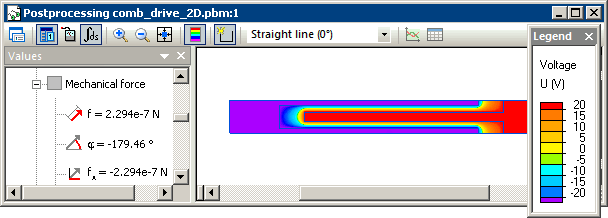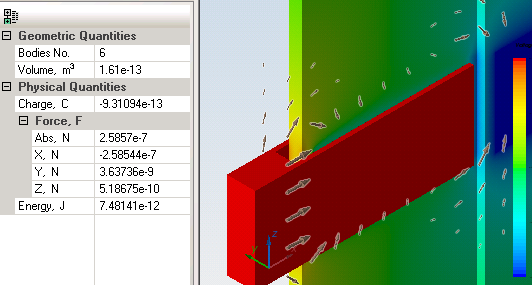
Comb-drive is a MEMS device that utilize electrostatic forces acting between two electrically conductive combs connected to the voltage source.
Problem Type:
3D problem of electrostatics.
Geometry:
Comb thickness Lz = 40 um.
Gap d = 2.5 um.
Given:
Relative permittivity of air ε = 1,
Relative permittivity of comb ε = 10,
Potential difference ΔU = 0.04 V
Problem:
Find the attraction force per tooth width and compare with 2D analytical solution:*
F = 0.5 · εε0 · n·Lz · U2 / d,
where n is number of air gaps.
Solution:
The simulation model includes only one pair of teeth (two air gaps, n=2). The Dn=0 boundary condition is applied on the plane of symmetry.
Results:
Analytical solution (force per one pair of electrodes, n=2):
F = 0.5 · 1 · 8.854e-12 · 2·40e-6 · 0.042 / 2.5e-6 = 227e-13 N.
| Force F | |
| 2D plane simulation | 229e-13 N |
| 3D extrusion simulation | 259e-13 N |


* Comb drive, from Wikipedia, the free encyclopedia.
See the comb_drive_2d.pbm, comb_drive_3d.pbm problems in the Examples folder.